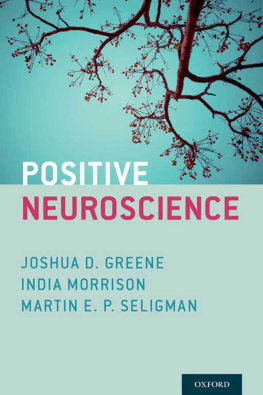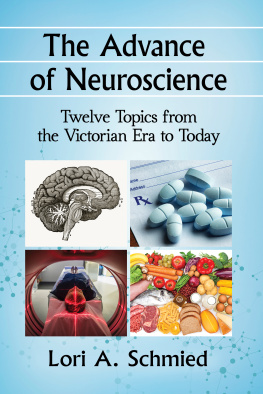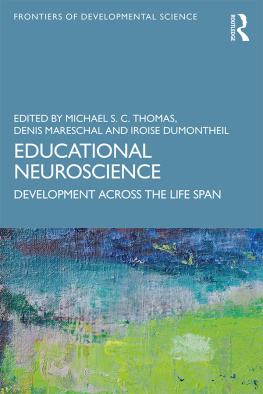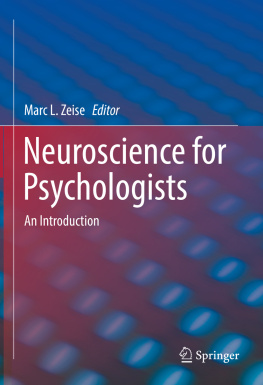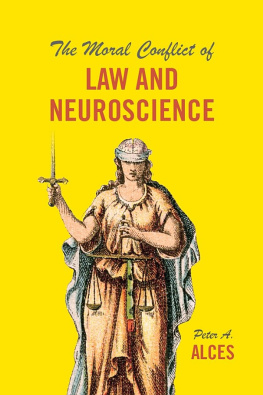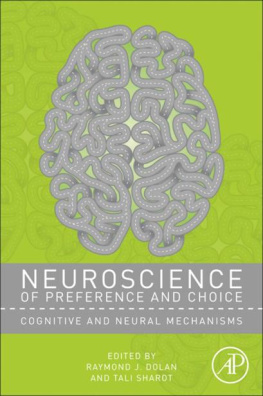Positive Neuroscience
Positive Neuroscience
EDITED BY JOSHUA D. GREENE INDIA MORRISON MARTIN E. P. SELIGMAN
OXFORD
OXFORD
UNIVERSITY PRESS
Oxford University Press is a department of the University of Oxford. It furthers the Universitys objective of excellence in research, scholarship, and education by publishing worldwide. Oxford is a registered trade mark of Oxford University Press in the UK and certain other countries.
Published in the United States of America by Oxford University Press 198 Madison Avenue, New York, NY 10016, United States of America.
Oxford University Press 2016
All rights reserved. No part of this publication may be reproduced, stored in a retrieval system, or transmitted, in any form or by any means, without the prior permission in writing of Oxford University Press, or as expressly permitted by law, by license, or under terms agreed with the appropriate reproduction rights organization. Inquiries concerning reproduction outside the scope of the above should be sent to the Rights Department, Oxford University Press, at the address above.
You must not circulate this work in any other form and you must impose this same condition on any acquirer.
Library of Congress Cataloging-in-Publication Data
Names: Greene, Joshua David, 1974- editor. | Morrison, India, editor. |
Seligman, Martin E. P., editor.
Title: Positive neuroscience / edited by Joshua D. Greene, India Morrison, and Martin E. P. Seligman.
Description: New York : Oxford University Press, 2016. | Includes index. Identifiers: LCCN 2015041438 (print) | LCCN 2015044606 (ebook) |
ISBN 9780199977925 (hardcover : alk. paper) | ISBN 9780199977932 (UPDF) | ISBN 9780199977949 (EPUB)
Subjects: LCSH: Affective neuroscience. | Neuropsychology. | Positive psychology. | Social psychology.
Classification: LCC QP401 .P68 2016 (print) | LCC QP401 (ebook) |
DDC 612.8dc23
LC record available at http://lccn.loc.gov/2015041438
9 8 7 6 5 4 3 2 1 Printed by Sheridan, USA
CONTENTS
Joshua D. Greene and India Morrison
India Morrison
James K. Rilling and Jennifer Mascaro
Thalia Wheatley and Beau Sievers
Jamil Zaki and Jason P. Mitchell
5. Is Human Prosocial Behavior Unique? Insights and New Questions From Nonhuman Primates 73
Lindsey A. Drayton and Laurie R. Santos
Tony W. Buchanan and Stephanie D. Preston
Vincent Man, Daniel L. Ames, Alexander Todorov, and William A. Cunningham
Yoni K. Ashar, Jessica R. Andrews-Hanna, Sona Dimidjian, and Tor D. Wager
Abigail A. Marsh
Kateri McRae and Iris B. Mauss
Britta K. Hlzel, Sara W. Lazar, and Mohammed R. Milad
Psyche Loui
Hans L. Melo and Adam K. Anderson
The research described in these pages was supported by the Positive Neuroscience Project, spearheaded by Martin E. P. Seligman through the University of Pennsylvanias Positive Psychology Center and supported by a generous grant from the John Templeton Foundation.
Daniel L. Ames , University of California Los Angeles
Adam K. Anderson , Cornell University
Jessica R. Andrews-Hanna , University of Colorado Boulder
Yoni K. Ashar , University of Colorado Boulder
Tony W. Buchanan , St. Louis University
William A. Cunningham , University of Toronto
Sona Dimidjian , University of Colorado Boulder
Lindsey A. Drayton , Yale University
Joshua D. Greene , Harvard University
Britta K. Hlzel , Harvard Medical School
Sara W. Lazar , Harvard Medical School
Psyche Loui , Wesleyan University
Vincent Man , University of Toronto
Abigail A. Marsh , Georgetown University
Jennifer Mascaro , Emory University
Iris B. Mauss , University of California Berkeley
Kateri McRae , University of Denver
Hans L. Melo , University of Toronto
Mohammed R. Milad , Harvard Medical School
Jason P. Mitchell , Harvard University
India Morrison , Linkping University
Stephanie D. Preston , University of Michigan
James K. Rilling , Emory University
Laurie R. Santos , Yale University
Martin E. P. Seligman , University of Pennsylvania
Beau Sievers , Dartmouth College Alexander Todorov , Princeton University Tor D. Wager , University of Colorado Boulder Thalia Wheatley , Dartmouth College Jamil Zaki , Stanford University
Introduction
JOSHUA D. GREENE AND INDIA MORRISON
As primates go, humans are pretty good. We do horrible things, of course, but increasingly less so (Pinker, 2011), thanks to our unmatched ability to form cooperative relationships, to value one anothers well-being, and to build social structures that expand the scope of human flourishing. Happily, these laudable behaviors are not rare occurrences, but rather the predictable products of healthy human brains. We seem built not just to survive, but to thriveeach of us born with a capacity for experiencing happiness and seeking meaning. How the brain produces these capacities and behaviors remains mysterious. This is largely because human flourishing is distinctively human, and most of what we know about brains comes from decades of research on nonhuman animals. Only in the last 20 years, with the advent of noninvasive functional neuroimaging, have healthy human brains become widespread objects of scientific study. And neuroscientific research aimed at understanding the biological bases of human flourishing is newer still. This volume brings together some of the most exciting new ideas and findings from this rapidly growing field.
Since this project began, the research from the scientists represented in this volume on the neuroscience of human flourishing has itself flourished, yielding surprising findings, deep insights, and new questions for each contributor and the next generation of positive neuroscience researchers. Most of this research has now been published in scientific journals (including some of the worlds top neuroscience and general science journals). Here we bring this work together in one place, and in a format suitable for both students and seasoned scientists. The research described herein falls into three broad categories.
Part I (Social Bonds) describes the mechanisms that enable humans to connect with one another. In Chapter 1, India Morrison discusses research on the
neuroscience of touch as a means for emotional communication, beginning with work on a newly discovered mammalian nerve type that may be specially attuned for touch in social interactions. In Chapter 2, James Rilling and Jennifer Mascaro describe research showing that the brains of men who are active parents differ from those of other men, consistent with patterns identified by research on nurturing behavior in nonhuman animals. In Chapter 3, Thalia Wheatley and Beau Sievers explain how human brains resonate with one another, enabling people to feel each others pain, communicate through music, and form social bonds.
Part II (Altruism) focuses on the neural mechanisms underlying our ability and willingness to confer costly benefits on others. In Chapter 4, Jamil Zaki and Jason Mitchell discuss research showing that human brains represent the value of altruistic behavior just as they represent the value of self-serving behavior, using general-purpose neural machinery that we share with other mammals. In Chapter 5, Lindsey Drayton and Laurie Santos consider the range of altruistic behaviors observed across animal species and conclude that human altruism has some features that are shared with other species but other features that appear to be uniquely human. In Chapter 6, Tony Buchanan and Stephanie Preston present a biologically based theory explaining why empathic feelings sometimes do and sometimes do not translate into altruistic action. In Chapter 7, Vincent Man, Daniel Ames, Alexander Todorov, and William Cunningham focus on the amygdala, a neural structure widely known for its role in fear and other forms of self-preserving behavior. They present evidence that, in humans, the amygdalas operations can be directed toward the goals of others, given the right motivation. In Chapter 8, Yoni Ashar, Jessica Andrews-Hanna, Sona Dimidjian, and Tor Wager present a model of compassion and compassionate behavior according to which distinct neural systems are responsible for the generation of compassion-related feelings, for inferring the contents of other minds, and for the representation of others suffering as related to oneself. In Chapter 9, Abigail Marsh discusses her research examining the distinctive neural and behavioral qualities of a group of extraordinary altruists, people who voluntarily donated kidneys to strangers.
Next page
